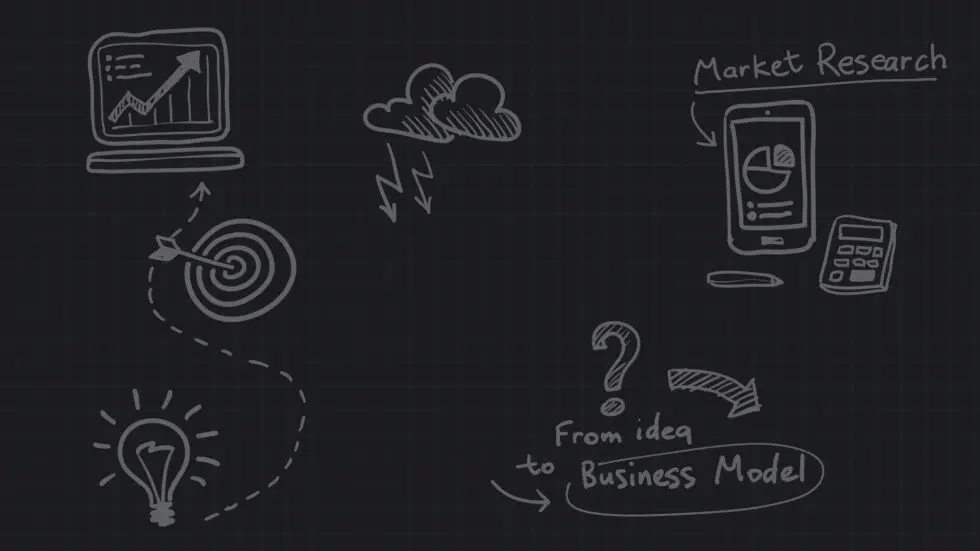“Artificial intelligence (AI) won’t replace you,” it has been said, “but someone using AI will.”
AI can do a lot, but it’s just math. How useful AI is comes down to what problems we humans direct AI to solve.
As marketing professionals, we don’t need to become AI experts. That said, some understanding of key AI terms, a surface understanding of how AI works under the hood, and some insight into what problems we might direct AI to help us understand and solve will certainly help.

- Adversarial Examples
- AI Whisperer
- Algorithm
- Artificial General Intelligence (AGI)
- Artificial Intelligence (AI)
- Bias
- ChatGPT
- Clustering
- Computer Vision
- Data Mining
- DALL-E2
- Deep Learning
- Decision Tree
- Ensemble Learning
- Fuzzy Logic
- Generative Adversarial Networks (GANs)
- Generative Pre-trained Transformer (GPT)
- IBM Watson
Adversarial Examples
Adversarial examples are inputs that are specifically crafted to trick a machine learning model into making a mistake. This is done by adding tiny changes to the input data, which can be difficult for humans to notice. These attacks are a concern for the security of various applications that use machine learning, such as self-driving cars, facial recognition, and email spam filters.
Algorithm
An algorithm is a set of instructions or rules designed to solve a specific problem or accomplish a particular task. In general, an algorithm takes input data, performs a series of operations or calculations on that data, and produces output data.
For example in social media user, platform, and other data are inputs that are used to create a custom feed, suggest content or creators, serve ads, and so on.
Artificial General Intelligence (AGI)
Artificial General Intelligence, or AGI, is the idea of creating an AI system that can do anything a human can do intellectually. This means it would be able to learn, reason, and adapt to new situations in many different areas. While researchers are currently studying AGI, there are no AI systems capable of achieving this level of intelligence yet (or so they tell us).
Artificial Intelligence (AI)
Artificial Intelligence, or AI, is a field of computer science that focuses on creating intelligent systems that are able to do things that normally require human intelligence. This includes tasks like learning, problem-solving, and recognizing patterns. AI uses many different techniques, such as machine learning, natural language processing, and computer vision.
Bias
Bias in the context of AI refers to the presence of systematic and inherent inaccuracies or errors in a machine learning model’s predictions or decisions. Bias can occur when the model is trained on a biased dataset, contains biased assumptions or parameters, or is designed in a way that favors certain outcomes over others. Bias can manifest in various forms, including racial, gender, or cultural biases, and can result in unfair or discriminatory outcomes.
ChatGPT
ChatGPT is a large language model created by OpenAI, based on the Generative Pre-trained Transformer (GPT) architecture. ChatGPT is capable of generating coherent and contextually relevant responses to natural language prompts, making it a popular tool for end users as well as in applications such as chatbots, question-answering systems, translation, and other tools.
Clustering
Clustering algorithms use mathematical measurements to determine how close or far apart different data points are, creates groups, and sorts data points into those groups, and updates the groups as needed. Cluster analysis in marketing has many practical applications, such as grouping customers with similar buying habits, finding where audiences overlap, finding content creators who speak to a similar audience, and so on. Cluster analysis is also helpful for organizing images by their contents, and detecting unusual data points.
Computer Vision
Computer Vision is a part of artificial intelligence that teaches machines how to understand and interpret the world visually. It involves developing algorithms and techniques that allow computers to analyze, process, and interpret visual data from images, videos, and other sources. Some examples of how computer vision is used include recognizing objects, detecting faces, interpreting gestures, searching for images and videos, and helping self-driving cars navigate.
Data Mining
Data mining is the process of looking at big sets of data to find patterns, relationships, and unusual things. This is done using techniques like machine learning, statistics, and pattern recognition. Data mining is useful in many different areas, including business intelligence, marketing, and scientific research.
DALL-E2
DALL-E2 is a neural network created by OpenAI that generates images from textual descriptions. DALL-E2 is trained on a large dataset of image-text pairs, allowing it to generate high-quality images that are faithful to the textual description. DALL-E2 has been used to generate images of novel objects and scenes, as well as to perform creative tasks such as generating memes and designing furniture.
Deep Learning
Deep Learning is a part of machine learning that uses special computer models called deep neural networks to solve very complicated problems. These models are particularly good at recognizing images, understanding language, and even playing games. Deep Learning models learn from very large amounts of data and can recognize patterns, make predictions, and even create new content.
Decision Tree
A decision tree is a type of computer model that makes decisions based on a set of conditions, arranged like a tree. Decision trees are often used in situations where we want to predict something based on a bunch of different factors. They’re particularly useful for classifying things into different categories based on what we know about them. Decision trees are straightforward to understand and can be visualized easily, so they’re used in fields like finance, healthcare, and marketing.
Ensemble Learning
Ensemble learning is a technique used in machine learning to improve the accuracy of models and prevent them from being too focused on specific data. It works by combining multiple models together to form a better overall prediction. Ensemble learning can be used with different machine learning methods, such as decision trees, neural networks, and others.
Fuzzy Logic
Fuzzy logic is a type of math that lets computers make decisions even when there is some uncertainty or ambiguity. It’s different from traditional computer logic, which is all about absolute truths and clear-cut answers.
Fuzzy logic is especially helpful when information is unclear or incomplete. By using fuzzy logic, computers can make decisions that are more like human thinking and that can handle real-world problems with lots of variables. More like human than computer reasoning.
Generative Adversarial Networks (GANs)
Generative Adversarial Networks, or GANs, are a type of AI model that learns to create new data that resembles a training dataset.
GANs are made up of two parts: a generator that creates new samples, and a discriminator that assesses the quality of those samples. The generator gets better at creating realistic samples by trying to trick the discriminator into thinking they are real. GANs have been used to generate realistic images, music, and text, among other things.
Generative Pretrained Transformer (GPT)
The Generative Pretrained Transformer (GPT) is a deep learning system from OpenAI that can understand and write text like a human. It has been trained on vast amounts of written text, so it can use what it has learned to write new sentences, paragraphs, and even entire articles. It can be customized to perform specific tasks, such as answering questions or summarizing long documents.
IBM Watson
IBM Watson is a cognitive computing system created by IBM. Watson uses natural language processing and machine learning to understand and analyze large amounts of unstructured data, including text, images, and videos. Watson has been used in fields such as healthcare, finance, and education, and has competed against human players on the game show Jeopardy!.
K-means Clustering
K-means is an algorithm that helps to find similarities in large sets of data. It groups data points together based on how similar they are to each other, creating clusters of related data points. The algorithm starts by randomly grouping data points and then adjusts the groups until it finds the best fit. K-means can be used in many areas, such as finding similar images, grouping similar customers for marketing purposes, and identifying unusual data points.
K-Nearest Neighbors (KNN)
K-Nearest Neighbors, or KNN, is a type of machine learning technique used for making predictions about new data. KNN works by finding the most similar examples in the existing data to the new input and then using those examples to predict the outcome. This similarity is measured based on the features of the data. The number of similar examples to consider is determined by the parameter k.
Machine Learning (ML)
Machine Learning is a subfield of AI that involves training computer systems to learn from data, without being explicitly programmed. Machine Learning algorithms can be divided into three categories: supervised learning, unsupervised learning, and reinforcement learning. Machine Learning has applications in fields such as finance, healthcare, and transportation.
Natural Language Processing (NLP)
Natural Language Processing, or NLP, is an area of AI that deals with how computers can understand and interact with human language. This involves using various techniques such as analyzing text to determine the emotions behind it, translating languages, and even recognizing spoken words. NLP has a wide range of practical applications, from improving customer service to helping people learn new languages.
Neural Network
A neural network is a machine learning technique inspired by the way the human brain works. It uses interconnected nodes to process and transmit information. Neural networks are useful for many tasks such as recognizing images, predicting values, and identifying categories.
Object Detection
Object detection is a technique in computer vision that involves finding and labeling objects within pictures or videos. The goal is to accurately identify and classify all objects in a scene and determine their exact location within the image or video. To accomplish this, object detection algorithms use complex mathematical models, like convolutional neural networks, to analyze visual data. Object detection has a variety of practical applications including in self-driving cars, security systems, robots, and medical imaging.
OpenAI
OpenAI is an AI research organization founded in 2015. OpenAI conducts research in areas such as deep learning, natural language processing, and robotics, and has released several influential AI models, including GPT and DALL-E2.
Predictive Analytics
Predictive analytics refers to using data and computer algorithms to make predictions about what is likely to happen in the future based on what has happened in the past. For example, a business might use predictive analytics to forecast sales for the upcoming year based on past sales data. By using this information, businesses can make more informed decisions and plan for the future more effectively.
PROMPT
A prompt is a specific input given to a machine learning model to generate a response or output. It could be a question, sentence, or a phrase that prompts the model to perform a particular task, such as translation, text generation, or image recognition. The prompt serves as a starting point for the model’s predictions, and the response it generates is based on the patterns and relationships it has learned from the data it was trained on.
Effective prompts can significantly influence the model’s output and its ability to perform the task at hand.
Prompt Engineer
A Prompt Engineer is a job title that refers to a person specializing in creating high-quality instructions (prompts) for AI models that use natural language processing.
Colloquially referred to as “AI whisperer”, a Prompt Engineer works to understand quirks in NLP and in specific AI models in order to design effective instructions that guide the AI model towards the desired outcome, while avoiding any unintended biases or inaccuracies. They are knowledgeable about the underlying structure of the language model they are working with and know how to optimize its performance based on use case.
Reinforcement Learning
Reinforcement Learning is a way to teach an AI system to make decisions by giving it rewards for good choices and penalties for bad ones. It’s like teaching a dog a new trick, rewarding it when it performs the desired behavior and correcting it when it doesn’t.
This approach has been used to help AI systems learn how to play games, control robots, and improve industrial processes.
Structured Data
Structured data is data that is organized in a predefined way, such as in a spreadsheet or database. Structured data can be easily searched, sorted, and analyzed using a variety of tools and techniques. Structured data is commonly used in fields such as finance, healthcare, and marketing.
Supervised Learning
Supervised learning is when a computer program is taught how to do a task by being given lots of examples to practice on. Each example has a label that tells the computer what the answer should be. By looking at many examples, the program learns to recognize patterns and make predictions on new, unseen examples.
This technique is used in many applications such as recognizing objects in pictures, understanding spoken language, and detecting fraudulent transactions.
Transfer Learning
Transfer learning is a technique used in machine learning to speed up the process of training a new model for a specific task. Instead of starting from scratch, a pre-trained model that has already learned general patterns and features is used as a starting point. Then, the model is adapted and fine-tuned with new data and adjustments to improve its performance on the specific task. Transfer learning can save a lot of time and resources, and has been used in various fields such as image and speech recognition, and natural language processing.
Unsupervised Learning
Unsupervised Learning is a type of machine learning where the computer learns to recognize patterns in data without any help from humans. In this approach, the computer looks for similarities and differences between data points to find structure in the data. Unsupervised learning can be used to group similar items together or identify unusual patterns.
Unstructured Data
Unstructured data is any kind of information that doesn’t fit nicely into organized tables or lists, like text documents, pictures, or social media posts. It’s hard to make sense of unstructured data using traditional methods, but with the help of AI tools like machine learning and natural language processing, we can now analyze it and find valuable insights. Unstructured data is becoming more and more relevant in today’s world of big data, as it makes up a significant portion of all the information that’s generated.
Voice User Interface (VUI)
A Voice User Interface, or VUI, is a type of user interface that allows users to interact with computers using voice commands. VUIs use natural language processing and speech recognition to interpret and respond to user requests. VUIs have applications in fields such as virtual assistants, customer service, and home automation.
Weak AI
Weak AI, also known as Narrow AI, refers to AI systems that are designed to perform a specific task or set of tasks. Weak AI systems are not capable of general intelligence or human-like reasoning, and are typically focused on a narrow domain, such as image recognition or language translation.
YOLO
Not to be confused with the Drake song, in AI YOLO stands for You Only Look Once and is a real-time object detection system used in computer vision. YOLO is designed to be fast and accurate, and can detect objects in images and videos with high accuracy and speed. YOLO has applications in fields such as surveillance, self-driving cars, and robotics.
Zero-shot Learning {#zero-shot-learning}
Zero-shot Learning is a type of machine learning that can recognize and classify new objects without being specifically trained to do so. This means that the system can identify new types of images, text, or audio without needing to be fed examples of each specific type. Zero-shot Learning is useful in fields like natural language processing, computer vision, and robotics, and can help machines to recognize and interact with a wider range of objects and concepts.


